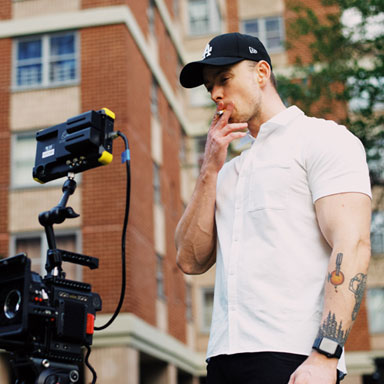‘Gordon Parks’
There are those whose work so changed the world that our memory of their lifespan is miserably interwoven with their craft. This independent movie shows Gordon Parks, who lived from (1912-2006) as one of these craftsmen. He is generally famously associated with capturing the impacts of what W. E. B. Du Bois named “the shading line.” His Alabama photos have become almost inseparable from the public memory of isolation, yet his polymathic brightness poses a potential threat over quite a few fields. It is difficult to check out, say, Cate Blanchett in Todd Haynes’ Carol, set in the mid 1950s, without likewise seeing Parks’ late ’40s photos of model Barbara Wood in a muskrat coat and shining with abundance and tastefulness.
Notwithstanding the photos, there were books, music, and films. Collection of independent movie Archives “The World of Gordon Parks” series centers on the last option and incorporates a 50th commemoration screening of the milestone blockbuster activity film Shaft (1971). The American framework isn’t known for taking incredible consideration of its independent movie craftsmen, even the industrially effectively ones. All things considered, by 1976, Parks had the option to set out on the independent movie Lead belly, his actual purposeful venture. The flawlessly shot film unfurls gradually, less worried about an absorbable proposal than investigations of the narratives and legends encompassing the eponymous blues artist. In any case, Paramount leaders were pursuing the last buck. Rather than freeing the world dependent upon him, the accomplishment of Shaft obliged Parks. It had, alongside Melvin Van Peebles’ Sweet Sweetback’s Badasssss Song (1971), birthed the blaxploitation classification. However, where their makers saw cocksure legends countering the “Uncle Tom” characters, as Parks put it, of American film, studios saw sex, viciousness, and another market to take advantage of.
The primary advertisements for Leadbelly showed the vocalist, played by Roger E. Mosley, half exposed, looking off into the distance, and underscored his lawbreaker record. For Parks, it was equivalent to disrupt. In a meeting with the Detroit Free Press, he depicted the disgrace of having “as of now surrendered quarts of blood attempting to motivate them to toss the [ads] out.” He told writer Barbara Kevles that when the independent movie was set to open in Washington, the studio hadn’t told the nearby pundits. Parks proceeded with his battle, yet in the end chose contrasting promotion duplicate “for various crowds.” The issue, from Paramount’s perspective, was that black audiences had “a significantly enthusiastic encounter,” while “white crowds were keener on the music and one advertisement can’t take special care of the two crowds.”
It was presumably reality, yet a severe one to hear while concerning an independent movie like ‘Lead belly’. Part of the way through it, ‘Lead belly’ and individual bluesman Blind Lemon Jefferson (Art Evans) wind up performing at an all-white hootenanny in a corridor brightened with a picture of George Washington and a Confederate fight banner. It’s two AM the point at which the performers choose to tap out. The intoxicated party coordinator demands they continue to play, despite the fact that the understanding was to stop at 12 PM. The vocalist twists down to get his guitar, stooping so low that he is eye to eye with esteemed gentleman. The coordinator grins and goes to the group, fulfilled by his power. ‘Lead belly’ tracks down his own fulfillment by breaking the guitar across the conceited man’s back. It is a supernatural occurrence that he is just beaten and detained.
An inquiry runs all through the vast majority of Parks’ independent movie: What is the most effective way for individuals of color to live under and to battle against racial oppression? Parks’ legitimately outlined this as an inward discussion. In Solomon Northup’s ‘Odyssey’ (1984), a PBS film in light of the very personal history that roused Steve McQueen’s ‘12 Years a Slave’ (2013), it is arranged through a progression of conflicts between the free-conceived Northup and the individuals who were naturally introduced to bondage. In Shaft’s Big Score, the 1972 development to Shaft, the scandalous investigator lets a curious neighborhood cop know that his lately killed companion cautioned him to “avoid dark honkies with large level feet.”
Despite the ways that Parks’ status as the “dark first” second to none streamlined his heritage his introduction include, the semi-autobiographical independent movie ‘The Learning Tree’ (1969), was quick to be coordinated by a black American for a significant studio-he never confused the need of black solidarity with proof of the actual thing. The tension that set off experiences applied to black Americans was too incredible and felt too unique to anticipate a unified front. A portion of his characters, similar to the modest youth at the focal point of The Learning Tree, zeroed in on schooling, and others, similar to Shaft, rode as near the third rail as could be expected. Yet, there was generally room in most Parks independent movie for those whose reaction to the shocks of American life was plain fury. At the point when jail waders confine ‘Lead belly’ in a steel sweatbox, an individual detainee prompts him, “You suit your approaches to the circumstance. Later you can conk that white man on his head. However, presently you simply study on living till tomorrow.” Living is enough in a country that needs you dead. He offers the artist a pitiful dinner, which Lead belly thumps back against his face. Better, for his purposes, to pass on solid.
While the highlights are the focal point of the Anthology review, the short narrative Diary of a Harlem Family (1968) most really distils Parks’ training. The independent movie, which develops a portion of his Life photos, opens with an arresting close-up of the dad of the Fontenelle family. Parks sits adjacent to him, portraying the man’s situation throughout everyday life. For all the contemporary discussion about documentarians working with their subjects, few are however willing as Parks might have been to really outline the accounts in their presence. After the camera has driven as far as possible into Mr. Fontenelle’s face, it then, at that point, dish and uncovers the entire family. Zooms and container dismantle photos of this Harlem family, featuring the signals intended to address a lifestyle. The narrative closes with Parks’ words, depicting uproar on the way. According to him, “As we went across the roads and climbed the four trips to the cool loft, I could ask why they hung tight for summer.”
The warm summers would return over and over, yet one questions that many individuals could hear what he was talking about. The release of Life from March 8, 1968, showed a Parks photo of a heartbroken black youngster with the title “The Negro and the Cities: The Cry That Will Be Heard.” Just a month after, Parks was entrusted with composing Life’s exposition on Martin Luther King’s death. A photograph subtitle depicted Vice President Humphrey as “communicating the country’s distress” to Coretta Scott King. Parks, in total agreement, inquired, “disregarding the tears in Ebenezer and all around the nation, how moved, truly moved, was the white inner voice?” If obviously the inquiry was expository, he proceeded, “Accept this, regardless any other individual tells you: you have pushed us to the incline.”
It would be too easy to even consider saying that Parks is important again in light of the fact that we are once again at that incline. Parks is significant in light of the fact that his work is great, in light of the fact that the picture of 20th century America can’t be considered without him, and on the grounds that we are not back by any means. We never left the edge where Parks’ independent movies live. They are in some cases light and chuckling, now and again harsh and incensed, however consistently they have one eye looking over into blankness, coaxing us to come and see, before we fall.




